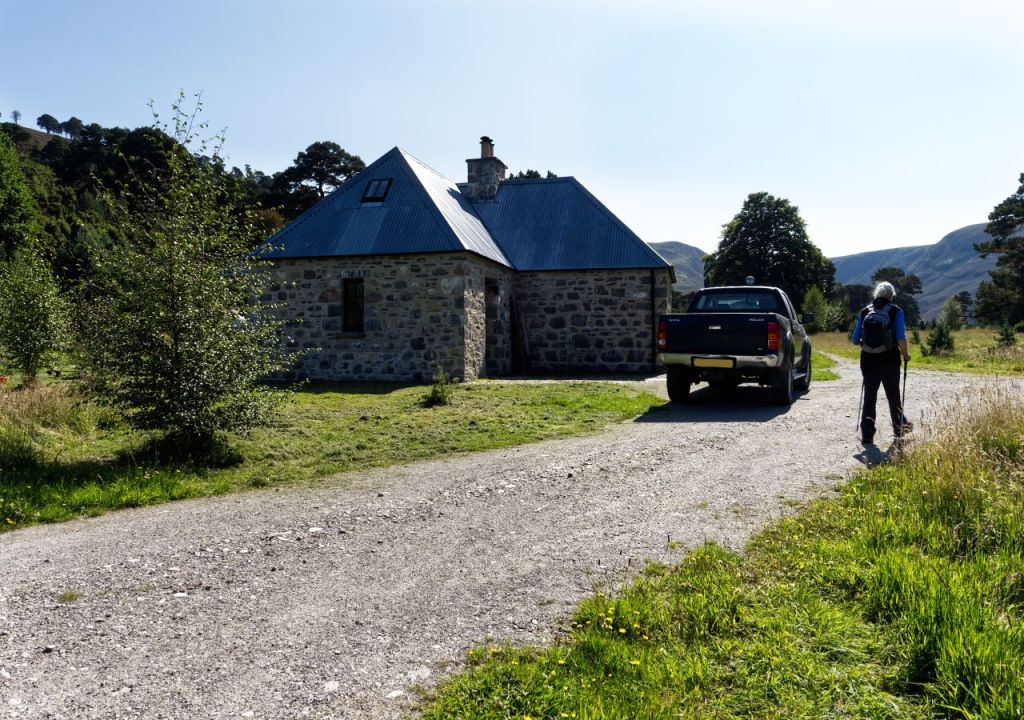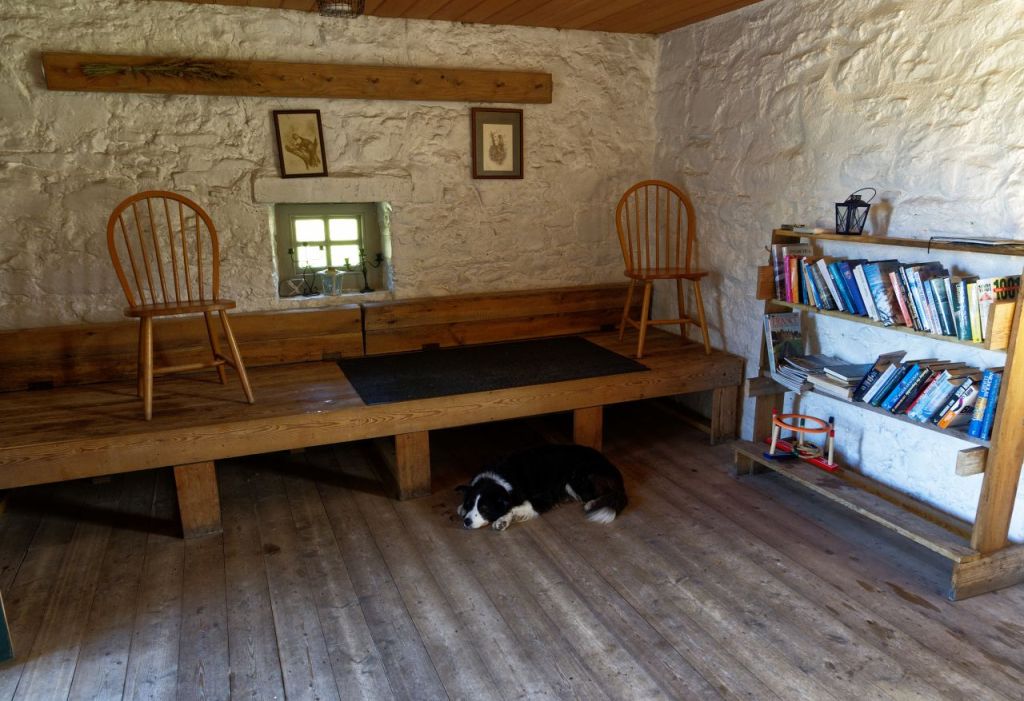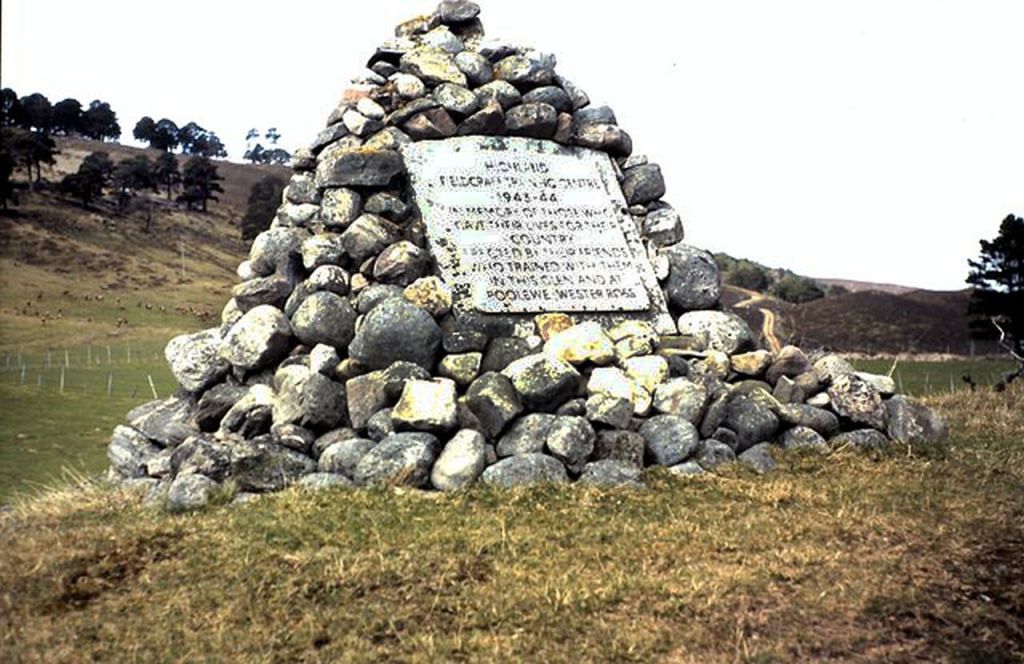
For the best viewing experience, left-click the images and maps to zoom in to a new window, then exit that window to go back – go on, it really does work!

Reading the two previous posts, you might imagine that summer in the Cairngorms means t-shirt weather every day – it really isn’t like that! We did have sunny weather while we were there, but one day was forecast for gale force winds. Strong winds on the exposed Cairngorm Plateau aren’t to be trifled with, so plans were modified for a trip to a lesser-known part of the National Park – Glen Feshie.

Why Glen Feshie you may ask. One reason was the obvious one that we had never been there, but there was an interesting hook to hang a trip on – a bothy. To merely say ‘a bothy’ is on the verge of being disrespectful though – Ruigh Aiteachain (Shieling of the Juniper Bush) is one of the best appointed and best kept bothies in Scotland and is rightly popular. (If you don’t know what a bothy is, check out the Mountain Bothies Association website)

Glen Feshie has been called the loveliest glen in Scotland, though fans of Glen Lyon or Glan Affric might have something to say about that. It could rightly be called the ‘jewel in the crown’ of the Cairngorms though, mainly because of sensible land management. In the past, some Scottish landowners have been far from enlightened, and in the 19th Century, many estates used evictions to clear the land of human occupation, in order to maximise profits from deer stalking and sheep farming.

The irony was that, for once, the cruelty of the clearances was down to the clan chieftains, not the English. Since then, estates have been bought and sold, sometimes to absentee landlords and sometimes to innovators. Danish businessman Anders Povlsen bought Glen Feshie in 2006 and prioritised the regeneration of natural habitat. The method was simple – drastically reduce the number of deer on the estate by stalking, not for profit but for the welfare of the land.
Deer numbers have been reduced to around two per square kilometre, allowing the regeneration of native trees. This in turn has benefited the whole ecology of the glen and wildlife species that had been long absent are returning. One thing you won’t find, as sometimes seen elsewhere, are hypocritical ‘Welcome’ signs that ‘request’ hikers to stay on the paths, contrary to access legislation in Scotland. Free access to the Glen Feshie is not only tolerated but encouraged.



On our way to Ruigh Aiteachain, known to many simply as ‘Feshie Bothy’, we passed by the last bridge over the river, which until 2009 would have permitted a circular route using both sides of the glen, re-crossing the river near to the bothy at a second bridge at Carnachuin. Unfortunately, Carnachuin bridge was washed away in a flood in 2009 and has not been replaced, more of which later.

The destructive power of water became a constant theme as we travelled on up the glen. The crossing of the Allt Garbhlach stream can be problematic, even impossible, when in spate. On arrival we found that the path had been washed out – this had been re-routed in recent years to cross the Allt Garbhlach by a set of steep steps, but the diversion and the steps had been obliterated. The descent to the stream was nasty and loose – the map showed this route plus an alternative, but we later discovered in a conversation at the bothy that the paths and tracks around here change frequently due to flooding.



We entered the woodland beyond the Allt Garbhlach and started to make faster progress on a good 4×4 track. One of the problems of striding out and having a good natter along the way is that subtle signs can be missed – Chris and I both missed the low sign for Ruigh Aiteachain by the side of the track, and if Border Collie ‘Mist’ saw it, she wasn’t letting on.




The map showed us to be on the correct route, but the 4×4 track we were on was about to spring another surprise – as we drew near to the river the track disappeared. The photos illustrate once again the power of the water, with the track totally washed out. A small knoll next to the remains of the track had a faint path heading the way we wanted, but there was a good bit of bushwhacking and cursing to be endured before we found ourselves back on the track.




The remaining section of the 4×4 track was far enough from the river to avoid any further surprises, and a straightforward stroll took us to the bothy. Parked outside was a pickup, a sight not exactly common at Scottish bothies. The owner broke off from trimming the already trim grass and asked if we would like a cup of tea. We had just met Lindsay Bryce who is the unofficial keeper of the bothy – I’ve got to say, he keeps it in very good order!





The area was used as a training area by commandos during WW2, and by the 1950s Ruigh Aiteachain cottage was virtually derelict. This was turned around when the MBA took over management of the cottage as a bothy, and since then landowner Anders Povlsen has not only supported the use of the bothy but has also undertaken major refurbishment that has transformed a wreck into one of the best-kept bothies in Scotland.

The approach to common bothy problems bears the hallmarks of Povlsens’s approach to estate management – instead of putting up signs that people will ignore, alternatives have been created that make it easier for bothy users to do ‘the right thing’. The problem of bothy users cutting down trees for fuel was easily solved by providing a good stock of dry firewood for the bothy. The problem of bothy users leaving human waste was solved by building a composting toilet next to the bothy. As the sign says, “It’s Glen Feshie. We do things differently here”.





We stayed at the bothy long enough for a chat with Lyndsay followed by a lunch break, ably assisted by ‘Mist’ who can sniff out a sandwich at 100 metres, but then it was time to head back. It would have been interesting to return by the west bank of the river, but as stated earlier, the bridge at Carnachuin was still in ruins after being destroyed by floods in 2009, so we were unable to visit the Commando Memorial on the other side. (The map just above shows the locations of the washed-out bridge, the memorial and the location of the sign we missed on the way in.)

Our return route had a couple of variations we had picked up in conversation with Lyndsay, and we managed to avoid the flood damaged sections that had been a problem on the way out. We made good progress back to the car park in plenty of time for the dog’s dinner time – it was time to head for home.

Text and images © Paul Shorrock, except where indicated otherwise. The other named images are taken from the Geograph Project and are reproduced under a Creative Commons Licence.




Haven’t been that far down Glen Feshie – only as far as just past the Garbhlach and then up onto the plateau. Always wanted to see (and preferably stay) at that bothy though – it was one of my work passwords – I knew no hacker was going to stumble across that by accident! Not with Gaelic being so complicated in writing.
I think I’d have waded the river on a nice day like that – it looks pretty shallow at Carnachuin…
LikeLiked by 1 person
Haha, great password! 😁 You’re right about being able to ford the river when its low – I’ve read a couple of references to that on other blogs. And of course, you hardy Munroists wouldn’t think twice about chucking yourselves in the river 😉
LikeLike
I often prefer to take books and socks off and wade rather than balance on slippery stones and risk falling in completely!
LikeLiked by 1 person
Absolutely! Walking poles desirable as well they make a load of difference in preserving balance.
LikeLike
I have to say I never find walking poles desirable! 😉 They admittedly are useful for crossing rivers when you’re not wading barefoot and you’re trying to use slippery stones.
LikeLike
Lovely bothy – I used to have one of those Norwegian stoves – a wonderful and long lasting source of heat, I miss it.
LikeLike